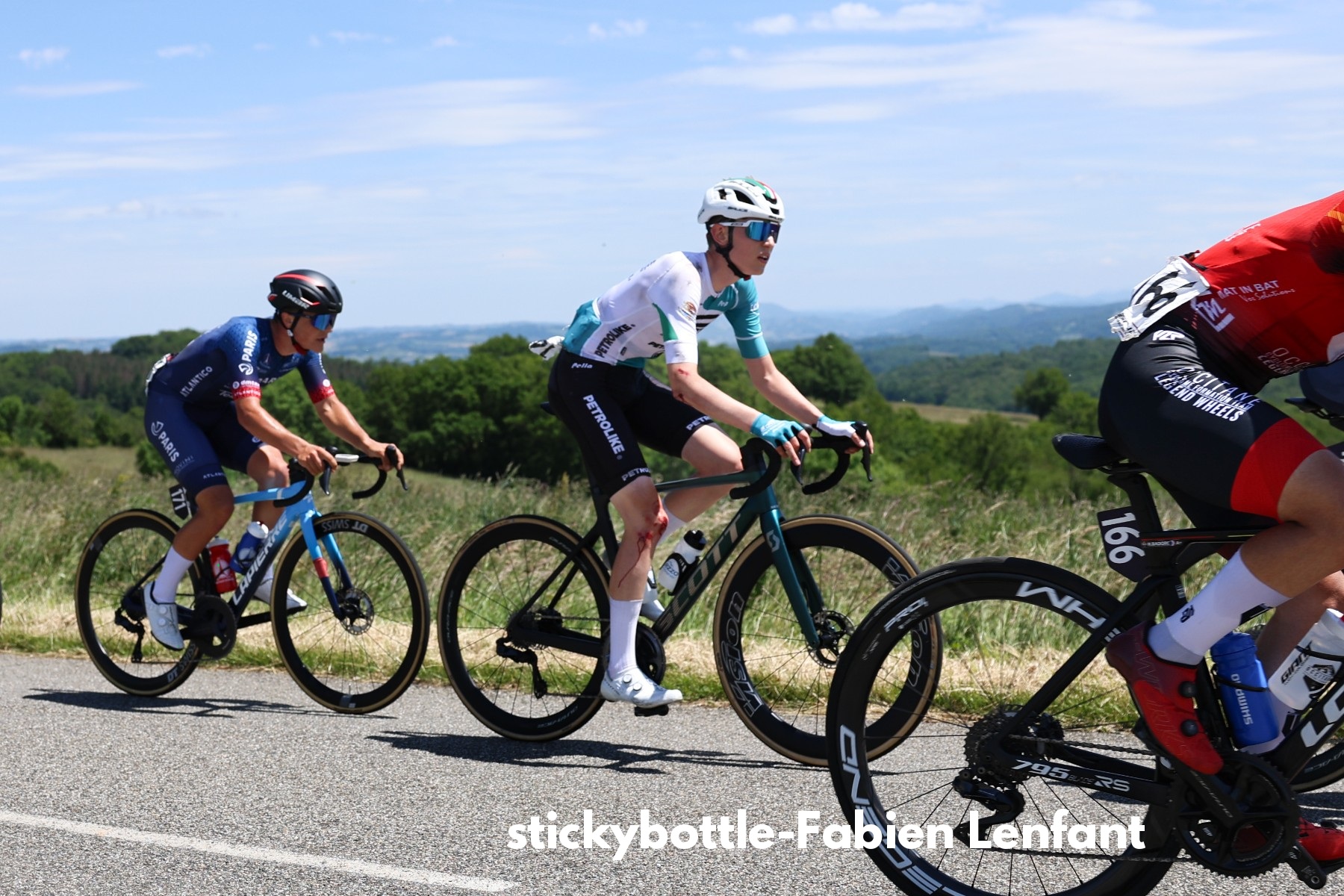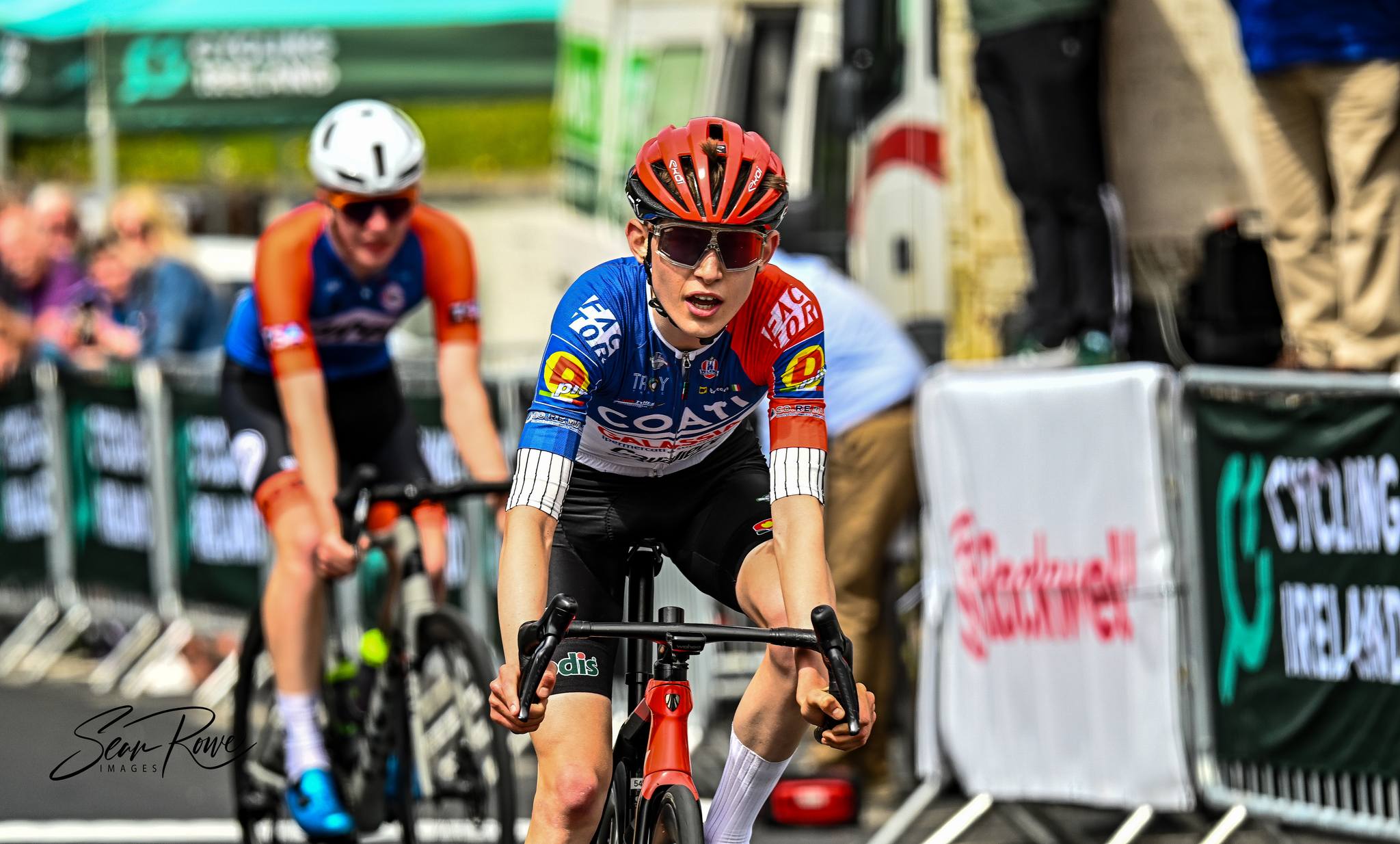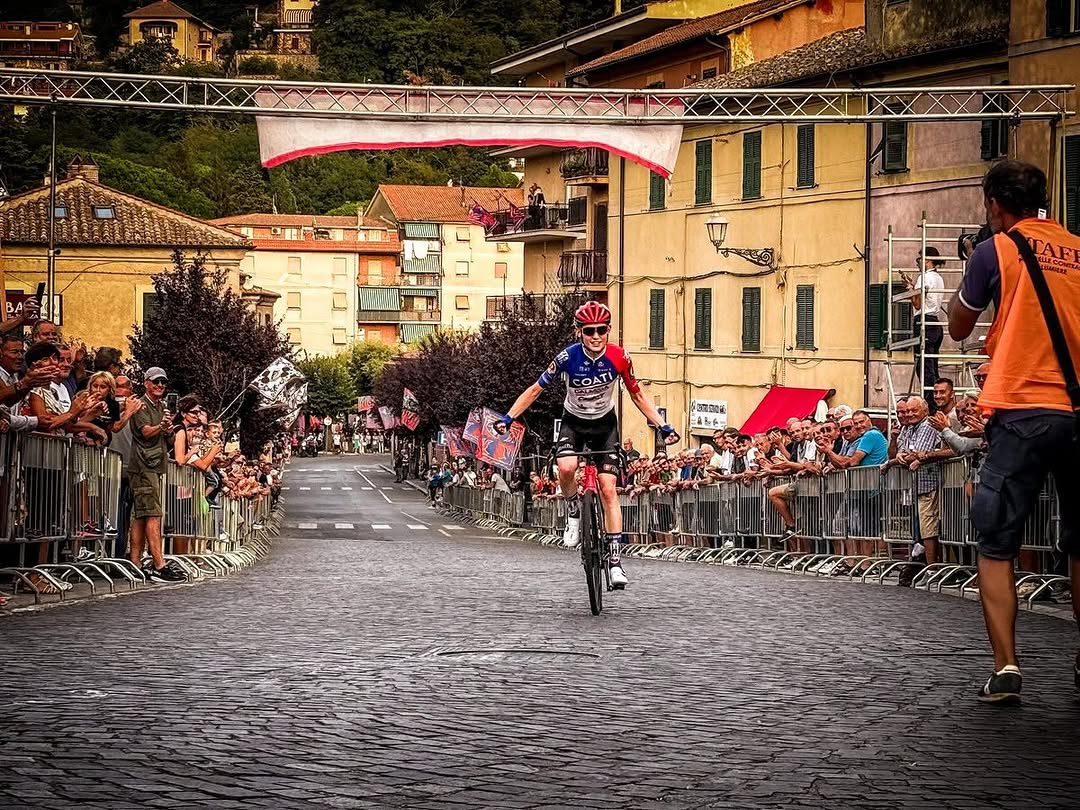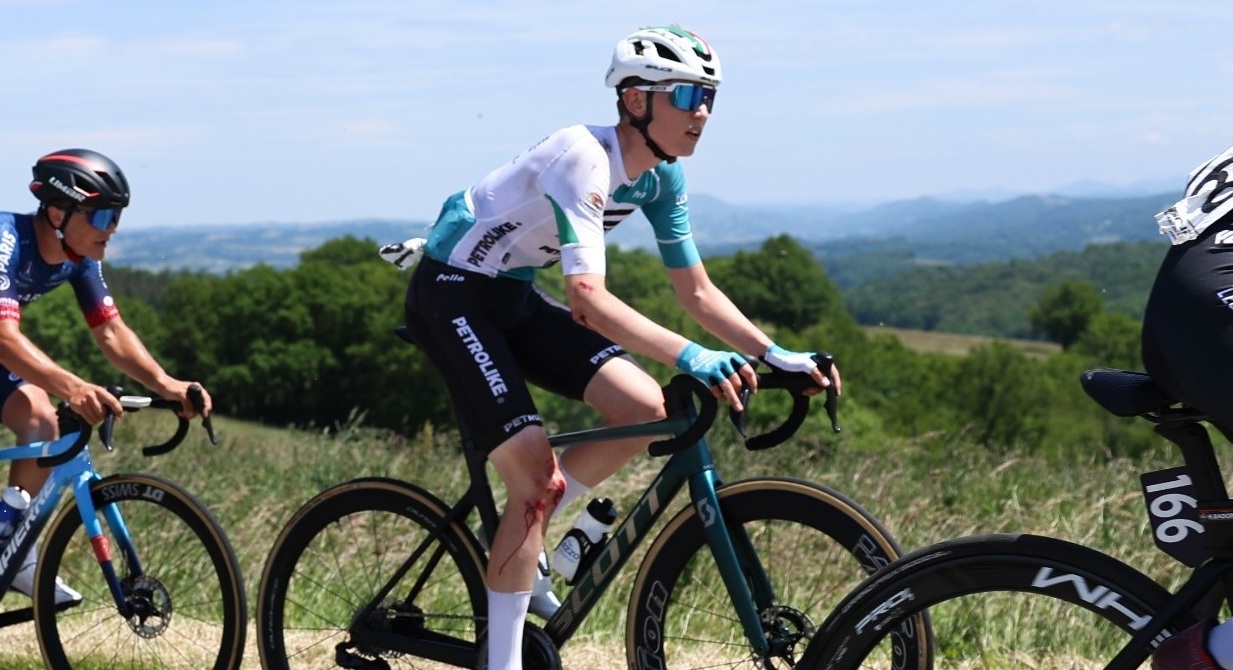 Killian O’Brien had an eye-opening experience at Ronde de l’Isard; crashing into a team car at 70kmph – hence the bloody knee – racing up big mountains for the first time and getting his elbows out in the constant battle for position (Photo: Fabien Lenfant)
Killian O’Brien had an eye-opening experience at Ronde de l’Isard; crashing into a team car at 70kmph – hence the bloody knee – racing up big mountains for the first time and getting his elbows out in the constant battle for position (Photo: Fabien Lenfant)
Winner of the elite National Hill Climb Championships, a podium finisher at the Junior Tour of Wales and strong performer in Italy, with two wins there, Killian O’Brien was a flyweight climber as a junior. He did enough to display his obvious talents, even though big climbs were few and far between in the races available to him.
The 19-year-old from Ballinteer, south Dublin, is now in his first year as an U23 and riding for Mexican UCI Continental team Petrolike. After a big winter training in Spain, his early season was derailed by a knee injury. Now recovered, he stepped into top tier U23 international stage racing for the first time at Ronde de l’Isard (2.2U) last week.
It was the first time he raced up big mountains, and where the fight for position was intense. The event, featuring most of the best U23 teams in Europe, was a baptism of fire, especially as it was O’Brien’s first U23 stage race. So how did it go, and how does this level compare to racing in Ireland?
“With the climbs, it’s just a different beast all together. I’ve never really had to race up a 40-minute climb before,” he said, adding at some of the hardest moments, it was his compatriot Liam O’Brien (Lidl Trek Future Racing) putting everyone in the hurt locker.
 Killian O’Brien finishes 3rd in the junior race at the National Road Championships riding for Veleka Team in 2024, when he won two races in Italy and claimed gold at the senior National Hill Climb Championships (Photo: Sean Rowe)
Killian O’Brien finishes 3rd in the junior race at the National Road Championships riding for Veleka Team in 2024, when he won two races in Italy and claimed gold at the senior National Hill Climb Championships (Photo: Sean Rowe)
Though he said he felt at his best on Sunday’s final stage – with the 14.7km cat 1 climb of Col de la Core crested 118km into the 150km course – events conspired against him. He crashed in a small town, as the roads narrowed before the climb, and then hit the deck for a second time as he was getting back on.
“I was in the cavalcade, ripping it back on the bumper of the team car and a car in front just hit the brakes for a speed bump,” O’Brien said. “I went through the back of the team car at about 70k an hour. So I went down really hard.”
Though he got back onto his bike for a second time, and regained the peloton, his right knee was badly bashed up and bleeding heavily, with other cuts and bruises on his right said.
When the riders reached the climb, O’Brien said his knee wouldn’t cooperate with the effort required. So he was forced to pull the pin. He rode to the summit at his own pace and was later picked up by a group in the valley and rode in with them. It was frustrating as he really wanted to see how he would climb on the last day.
“Throughout the week my resting heart rate was going up all the time,” he said of the fatigue building. “But on Sunday morning it was back down to normal, I felt great and I thought I still had a chance.”
 O’Brien wins Gp Madonna Delle Grazie in Italy last year, where he stepped into European road racing for the first time
O’Brien wins Gp Madonna Delle Grazie in Italy last year, where he stepped into European road racing for the first time
He said stage 2 – some 132km from Luz-Saint-Sauveur to Cauterets with 3,000m of climbing – was probably his best performance. The route included a late climb, a cat 2 crested 4km from the finish. He climbed in the front group, of about 30 riders from 135 starters.
At the last, as the terrain evened off just before the finish, a rider ahead of him the wheel go. That was just as Liam O’Brien was attacking off the front in pursuit of stage winner, and eventual GC winner, Jarno Widar (Lotto Development).
That pressure applied by Liam O’Brien – who was eventually 2nd overall – ramped up the pace and meant Killian O’Brien couldn’t close back to the group.
“Liam attacked as that gap opened on me, and he was just so strong I couldn’t close it,” said Killian O’Brien.
“I finished maybe 30 seconds down on the front group (in 26th) and I was happy enough with that. Even though it would have been nice to have been in the group, I’d had the legs to hold them over the climb.”
Overall, what were his impressions of his first experience of this kind of racing, in one of the hardest U23 stage races in Europe?
“The bunch positioning was a bit of a shock, I’ve never had to do that in my life,” he said of having to work just to hold position, with moving even more testing. “In Ireland, I’m used to 30 or 40 guys (in a bunch). And if you want to get to the front, you just move up, it’s easy.”
In France last week he said positioning was very challenging, especially on the opening stages, though he found he quickly learned to cope.
“On the last two stages I was pretty comfortable moving up around the middle, not having to send it up the outside when there was a gap,” he said. “I was able to hold position in the top 30 going into the climbs pretty consistently, so that was okay.
“On Sunday I was a bit unlucky. I was in a good position and I crashed. But I still had the position in the bunch. And then on the climbs… I didn’t feel I was completely out of place.
“There our obviously some guys who are just better at the moment, and that’s just the way It Is. They have 10-15 watts on what I have. And when you accumulate that over the whole day, it just means on the last climb I’m on my limit and they can still attack. But for my first proper stage race, and my first stage race of the year, I think I’m pretty happy.”
O’Brien’s team is riding the upcoming Giro Next Gen, though he is not sure if he will line out at that race. In terms of stage races to come, he is provisionally down to start Giro Ciclistico della Valle d’Aosta-Mont Blanc (2.2U) in July, Volta a Portugal em Bicicleta (2.1) in August and Tour de Langkawi (2.Pro) in October.
He appears especially looking forward to Valle d’Aosta-Mont Blanc, which should prove a chance to gauge his progress on climbs compared to Ronde de l’Isard.
“It’s probably the biggest goal from me now,” he said of the mountainous five-stage race in Italy, which was won by Ireland’s Darren Rafferty two years ago. “I’ll probably be back to my peak form and hopefully that will suit me, with the big climbs.
“Since the injury, I’ve had the last two or three months of training. And every week I’m getting better. Hopefully that continues. And at Valle d’Aosta, hopefully I’ll be closer to the front, maybe in the top 20-15 on the climbs instead of the top 30.”
